
[111] Cynara cardunculus, Artichoke
Introduction
Cynara cardunculus var. scolymus, the Artichoke, is a subspecies of a species in the thistle family that is cultivated for use as a vegetable. It is also known as a Globe Artichoke, French Artichoke or Green Artichoke.
It should not be confused with the Jerusalem Artichoke, Helianthus tuberosus, a type of Sunflower, which is also cultivated as a vegetable.
Taxonomy
Kingdom – Plants
Division – Vascular Plants
Class – Angiosperms (Flowering Plants)
Order – Asterales
Family – Asteraceae
Subfamily – Carduoideae (Thistles and others)
Tribe – Cynareae (Thistles and others)
Genus – Cynara
Species – Cynara cardunculus (Cardoon or Artichoke Thistle)
Scientific Name – Cynara cardunculus var. scolymus
Until recently it was regarded as a separate species, Cynara scolymus.
There are many cultivars. Some are propagated by seeds and some vegetatively. Some have buds with purple coloration.
Name
The word artichoke came from Sixteenth Century Italian articiocco, which came via Spanish from Arabic roots.
Cardoon comes from the Latin name carduus, which applied either to the wild cardoon or to the variety we now call artichokes, or to thistles.
Cynara comes from the Ancient Greek name, kunara. Cardunculus is a diminutive of cardus or carduus.
Scolymus is another plant in the thistle family, related to Chicory, deriving its name from Arabic skwlyms.
(The Jerusalem Artichoke is named because its taste is similar to the artichoke, although the part we eat is different. Jerusalem is a corruption of girasole, the Italian for sunflower.)
Description
The Aster family has a complex taxonomic structure and it is arguable how far up it the word ‘thistle’ applies. Cynara cardunculus is fairly closely related to [082] Creeping Thistle and Bull Thistle, but not close enough to be called a thistle.
There is a plant called a Cardoon native to central and Western Mediterranean areas. Its flower buds are bright purple and its stems are cultivated to be eaten.
The Artichoke has recently been reassigned taxonomically as a variety of this species but it is different and it Is not its stems that are eaten.
It is quite a large bushy plant with large, deeply lobed glaucous green leaves.

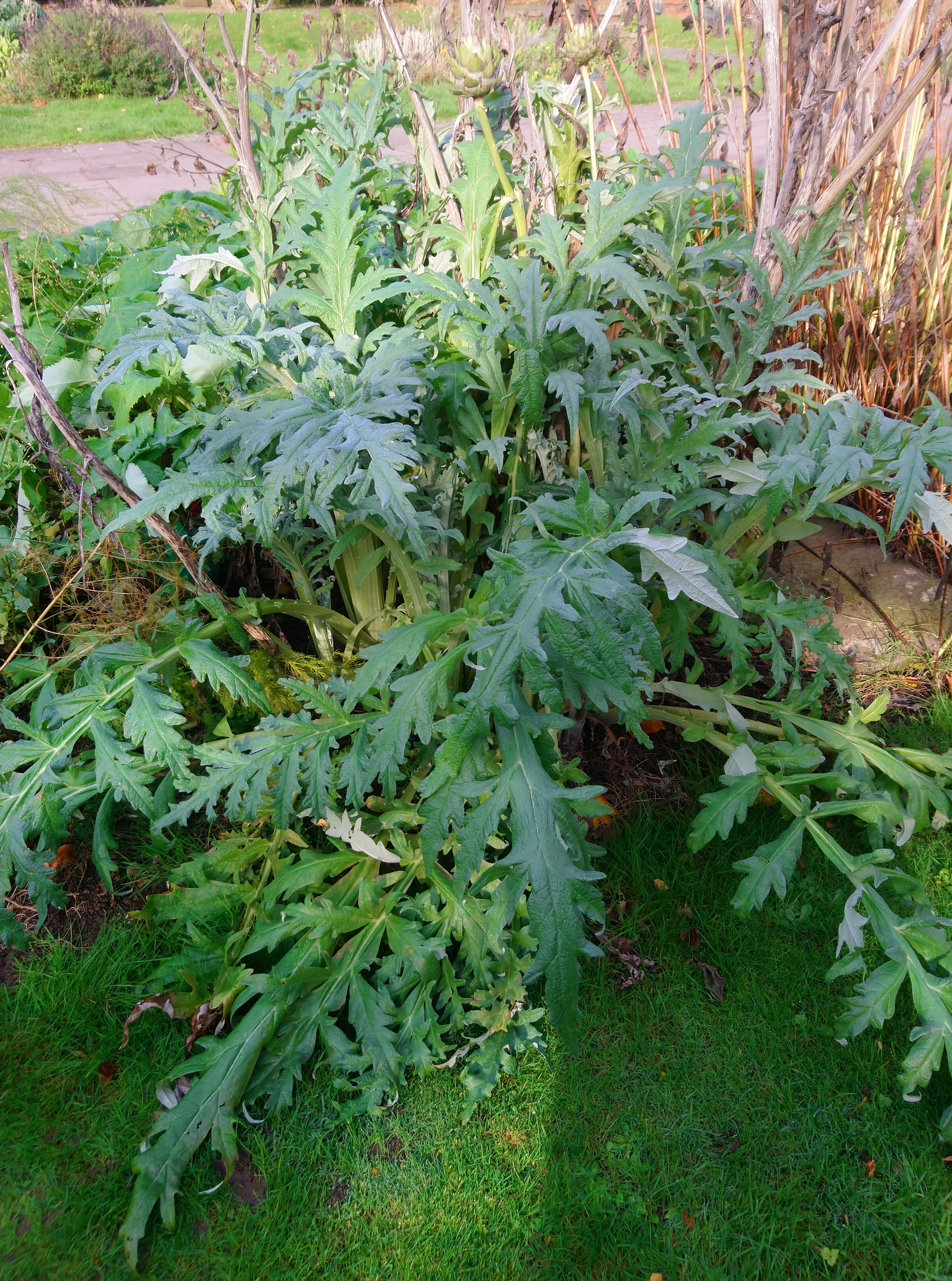
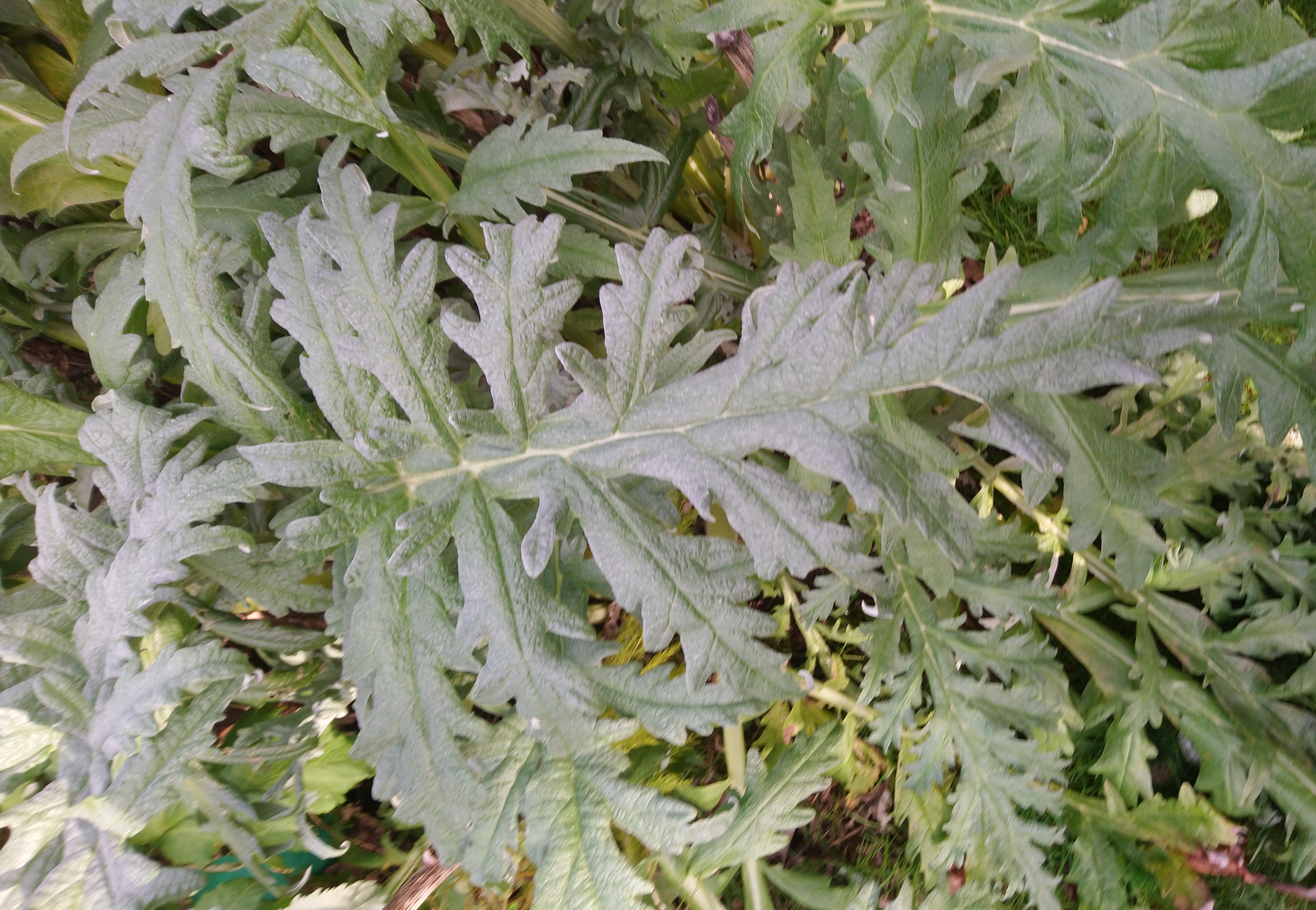
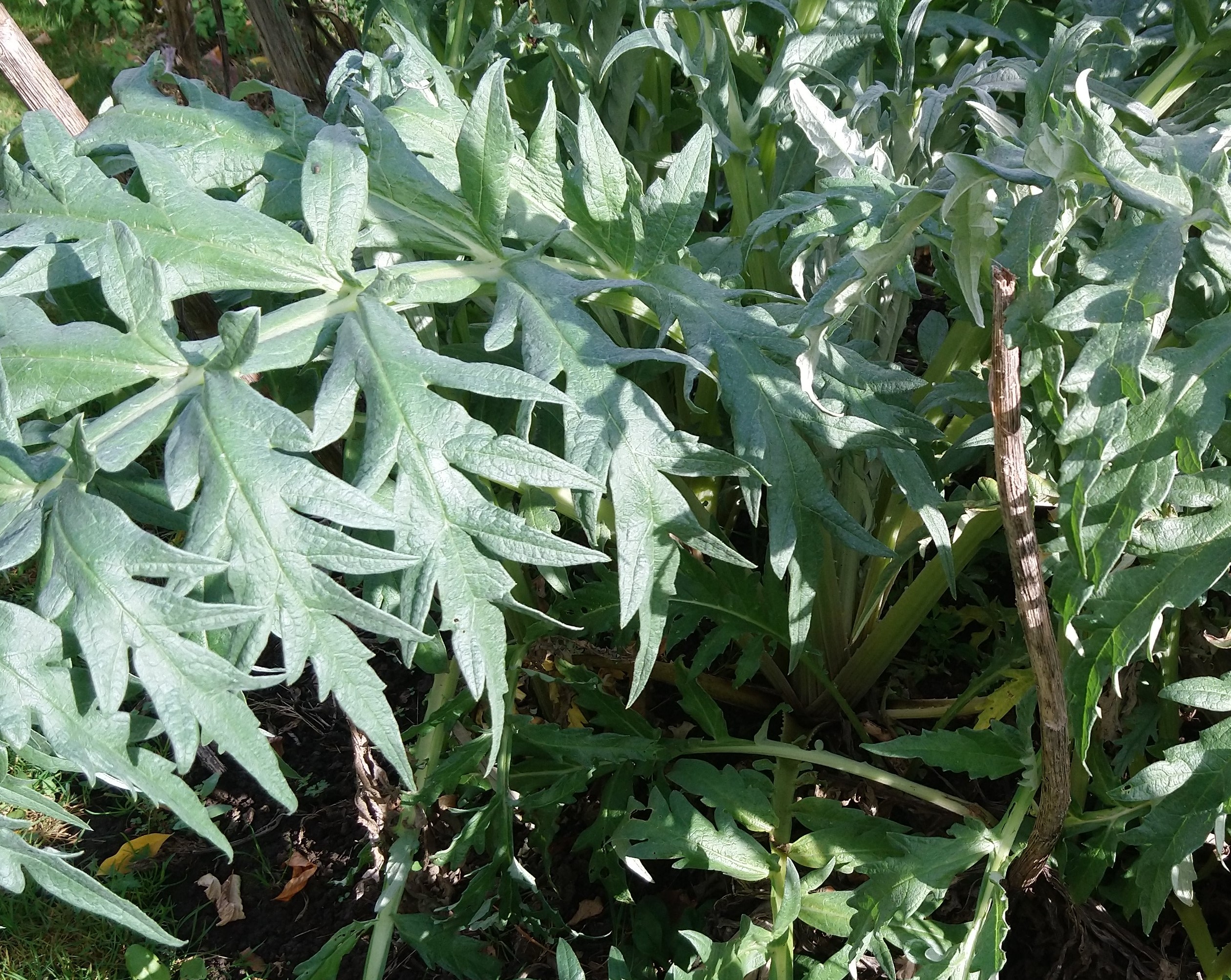
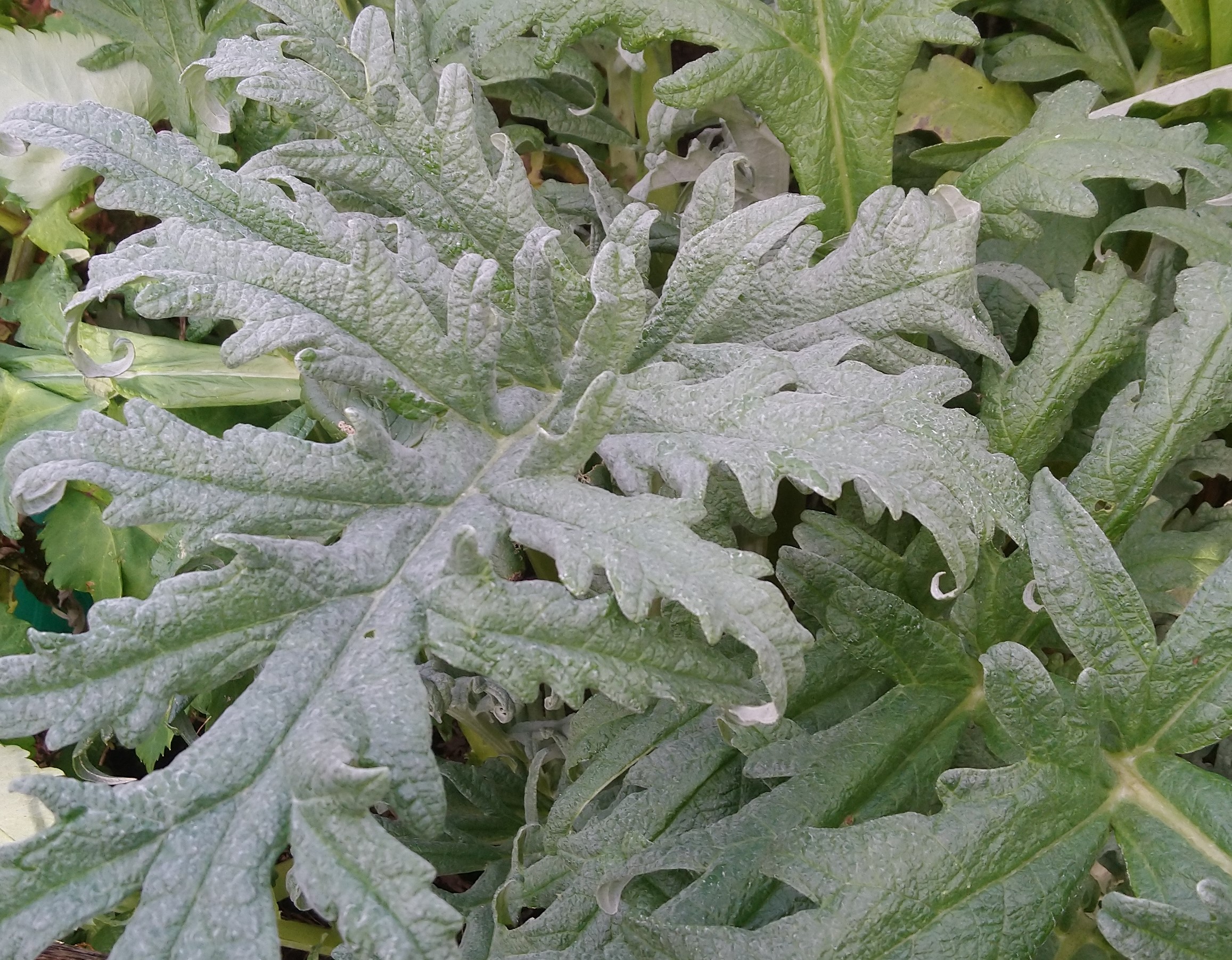

They are perennial, generally producing edible buds from the second year.

The inflorescences, surrounded by bracts, are initially spherical. The flowers are similar to thistles.
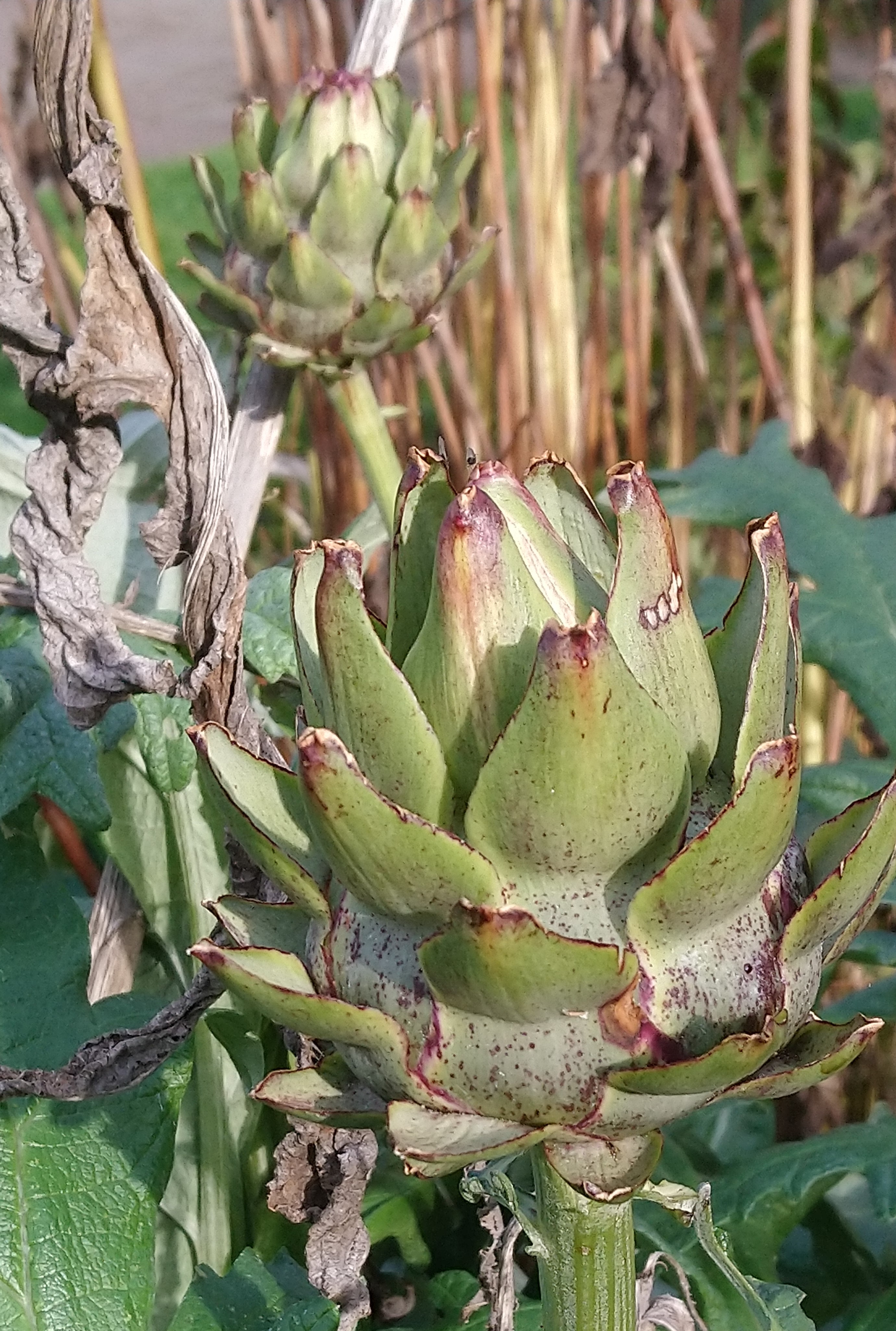

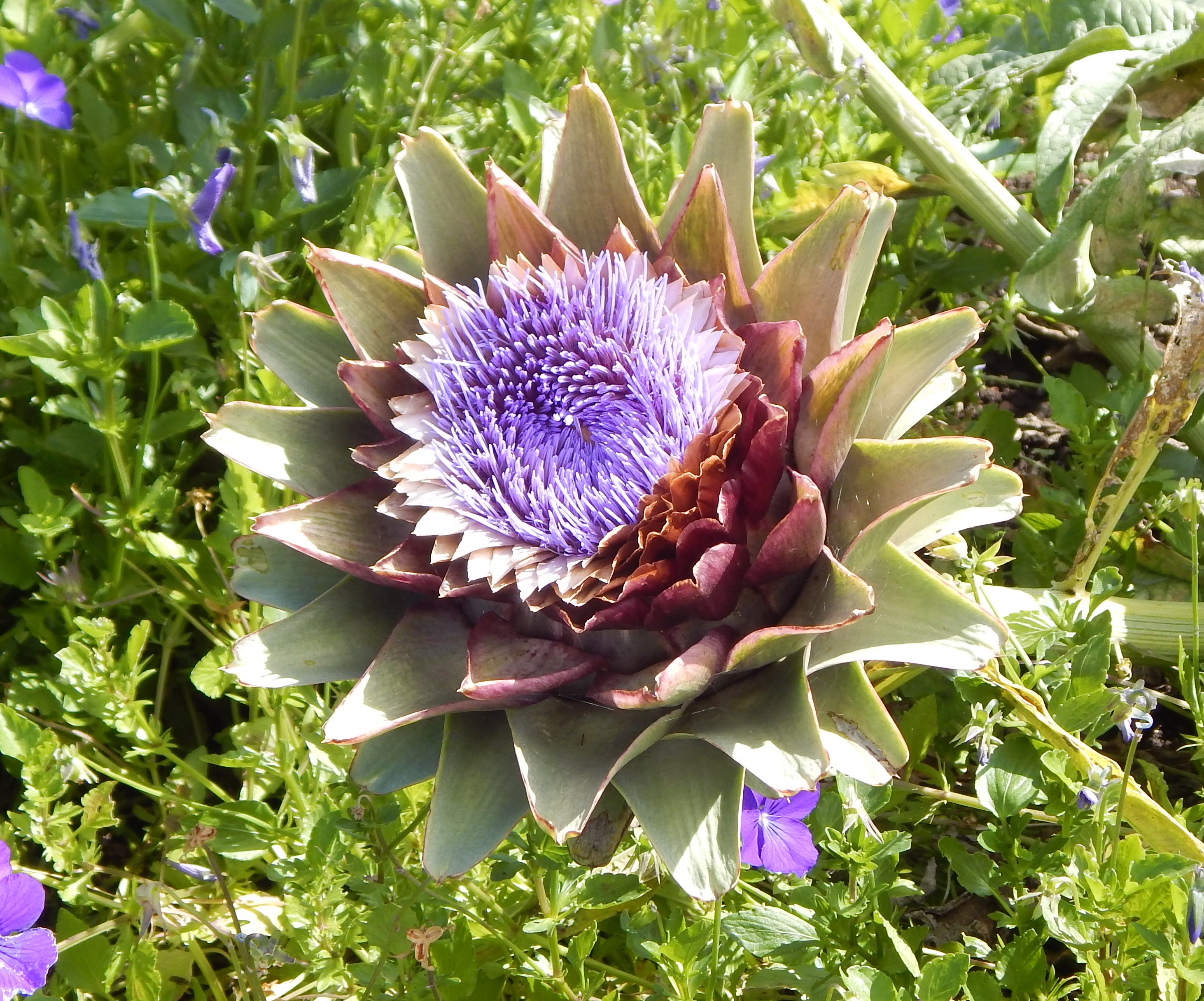
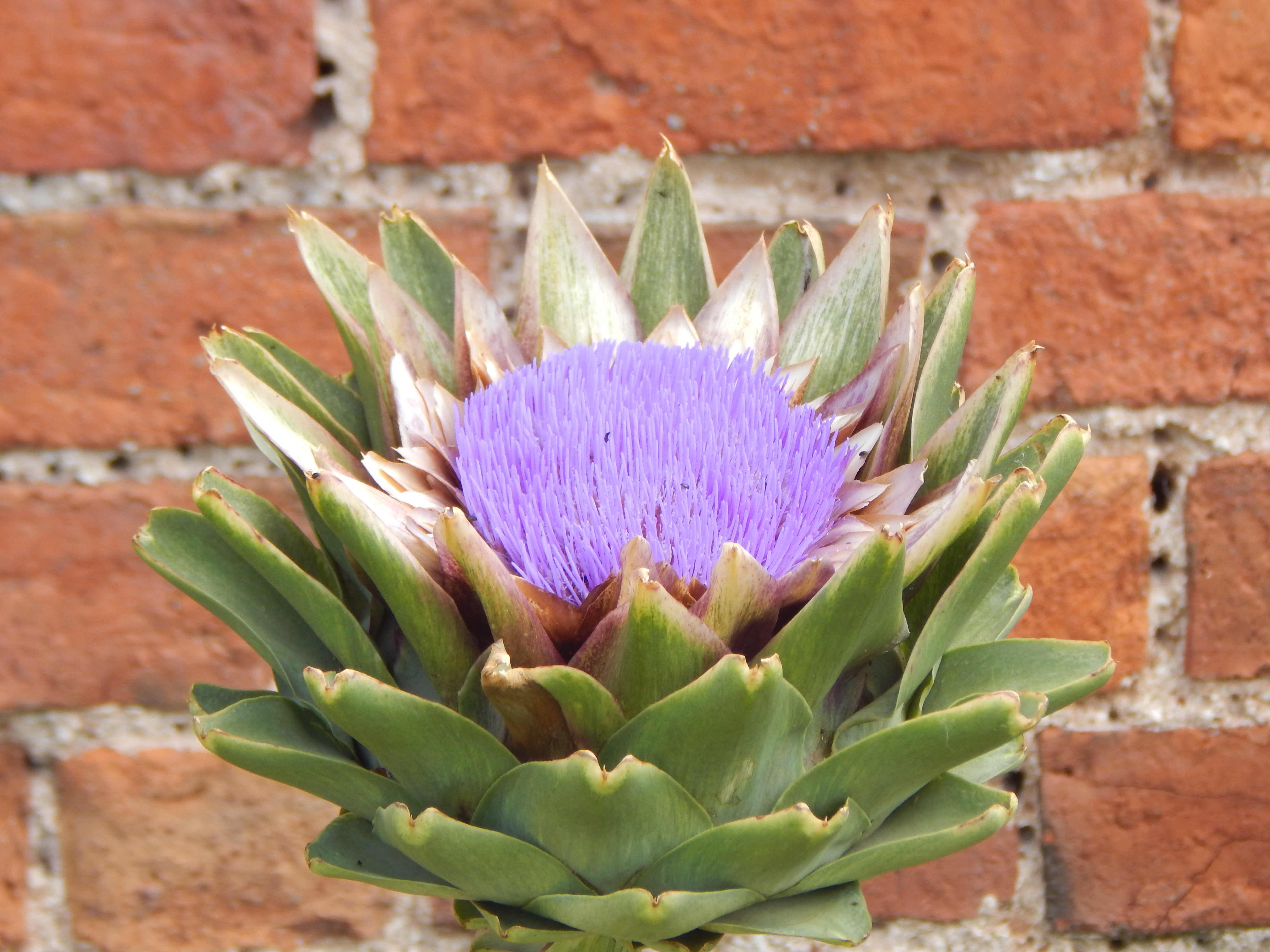
Habitat and use
It is not clear whether the Artichoke was known to the Ancient Greeks or whether they cultivated the related cardoon. By the Middle Ages it was well known in Spain and Germany. The Dutch introduced them to England and Henry VIII had them in his gardens in the Sixteenth Century.
They are now widely cultivated especially in Mediterranean countries and South America.
The Artichoke as a vegetable is the globular inflorescence before the flower develops. Once the buds open it becomes inedible. I am not including any culinary advice in my blogs.
It can also be grown as an ornamental garden plant.
Other Notes
In a way you are might expect to find this in kitchen gardens but there are many public gardens that have areas devoted to fruit and vegetables, sometimes ornamental varieties.
See also
I haven’t included any similar vegetables in my blog but you can look for them. The closest relatives are the thistles that we have already met.
